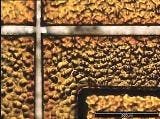The general consensus is that high-brightness light-emitting diodes (HB-LEDs) are the future of the lighting industry. Their key benefits include: high energy efficiency/low electrical consumption; very long operating life (up to 100,000 hours); the ability to direct light for increased system efficiency; robustness and resistance to vibration; a cool, safe-to-the-touch output beam; vivid, fully saturated colors; and instant-on operation.
According to market-research firm Strategies Unlimited, the overall market for HB-LEDs has grown nearly 50 percent per year since 1995, and for HB-LEDs used in lighting applications the market has grown 60 percent per year over the last three years. In 2008 alone, a 12% increase is anticipated, with the total market for packaged HB-LEDs projected to reach $11.4 billion by 2012.
The potential applications for this rapidly growing area of lighting technology are practically limitless, reaching beyond conventional home and industrial applications to areas such as medical devices, automotive and architectural lighting, backlighting for displays, and a host of new consumer products.
With that said, HB-LEDs pose some challenges in terms of their manufacture. They’re grown by using sophisticated epitaxial growth techniques such as metal-organic chemical vapor deposition (MOCVD)—a complex process that relies on chemical reaction for crystal growth rather than physical deposition. ...
Read the complete article at Industrial Laser Solutions magazine.






